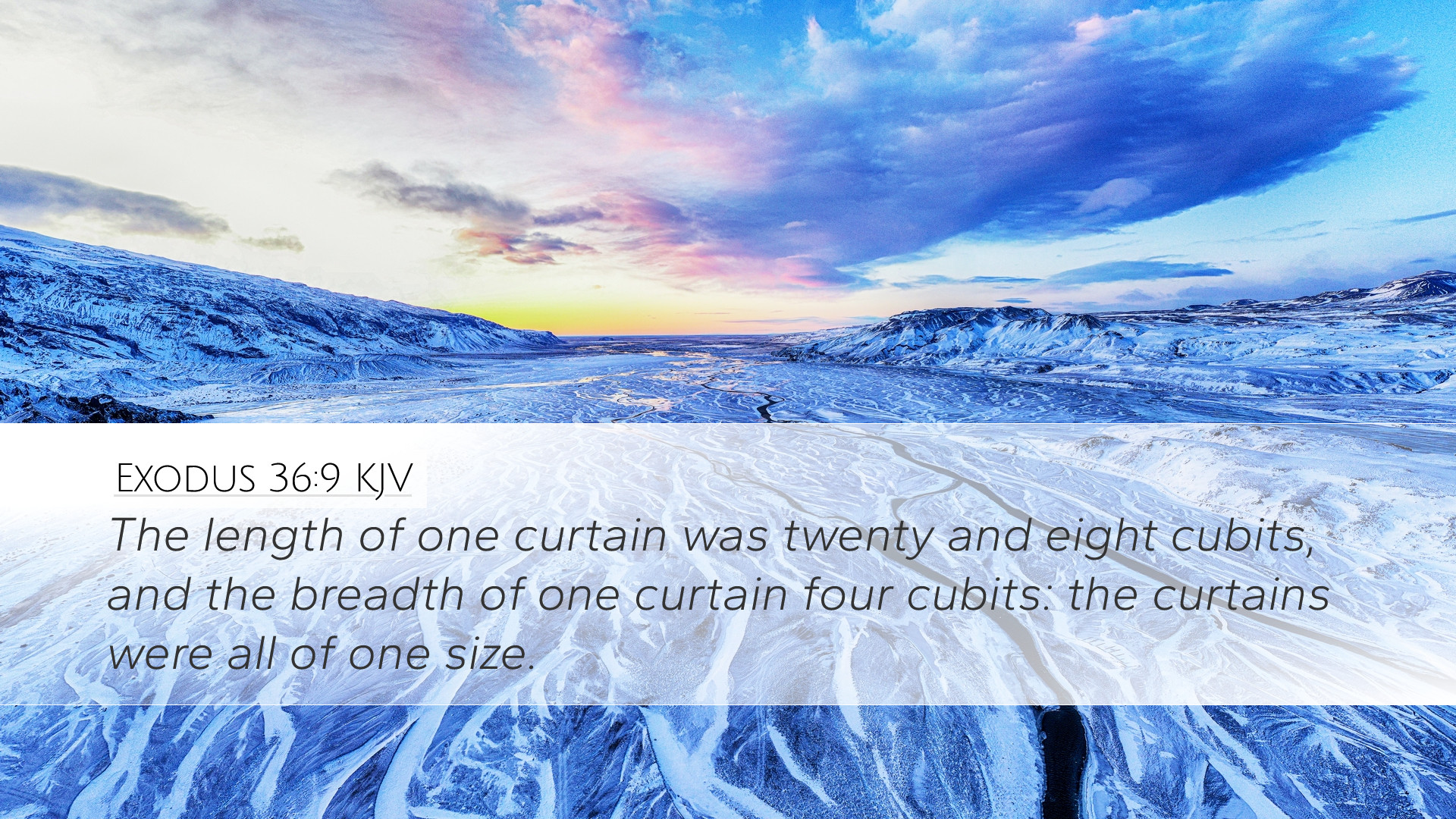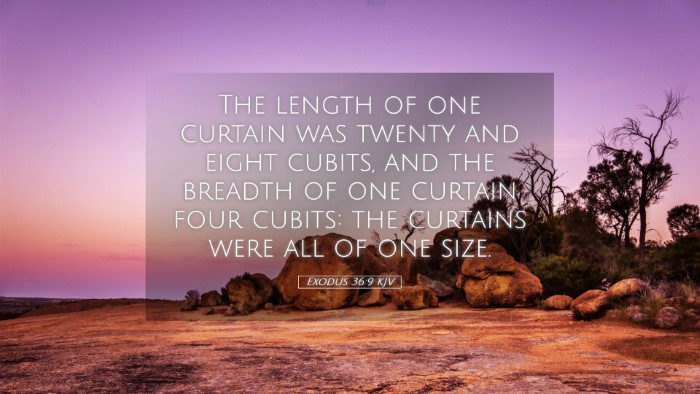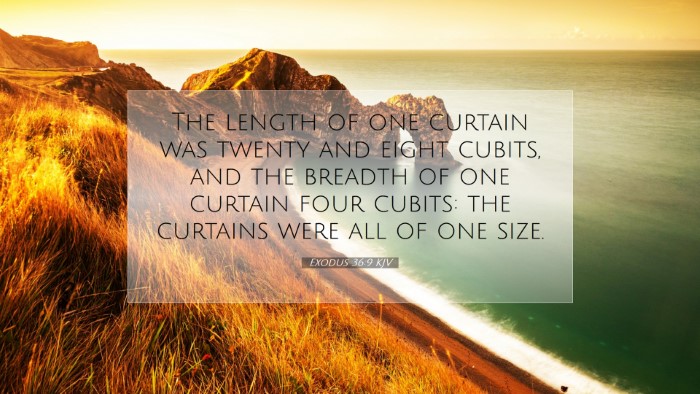Exodus 36:9 Commentary
Bible Verse: "The length of one curtain was twenty and eight cubits, and the breadth of one curtain four cubits: the curtains were all of one size."
Introduction
This verse takes us into the intricate and precise details concerning the construction of the Tabernacle. The specifications highlight not only the physical dimensions but also the unified design of the curtains, which played a significant role in the overall structure. Drawing insights from esteemed public domain commentaries, we explore the theological, symbolic, and practical implications of this verse.
The Significance of Measurement
The specified dimensions are crucial in understanding the orderly nature of God’s directives. As Matthew Henry notes, God is a God of order and not of confusion. The meticulous details in the measurements illustrate that God values precision in worship and signifies that His presence among His people is established through carefully chosen means.
Dimensions and Symbolism
Albert Barnes expounds upon the significance of the cubit as a standard of measurement, which reflects not only human practicality but divine revelation. The choice of these specific dimensions serves a dual purpose: they provide a physical outline for the Tabernacle while simultaneously symbolizing divine completeness and perfection. The unity in size among the curtains might be seen as a metaphor for the unity of God’s people under His covenant.
Unity in Worship
The uniformity in the size of the curtains emphasizes the idea of coherence in worship. Every curtain's identical measurements symbolize that all aspects of worship—just as all aspects of the congregation—should reflect unity of purpose and manner. Adam Clarke comments on the importance of communal identity in the worship setting, suggesting that just as these curtains were united in form, so too must the worshippers come together in spirit and truth (John 4:24).
The Role of the Curtains
In light of the functional purpose of the curtains, they serve as a barrier and a means of separation. The Tabernacle curtains created an environment where the sacred could meet the secular. Matthew Henry emphasizes that the curtains not only provided physical covering but also symbolized the holiness of God, keeping the divine encounters sacred. This calling to holiness is echoed throughout Scripture, reflecting the idea of separation from that which is unclean or profane.
Covering and Protection
The curtains functioned as a protective layer. As Albert Barnes remarks, they shielded the inner sanctum from external elements, much like how God’s commands protect us from the world’s influences. The creation of such an intimate space for divine worship reflects God’s desire for a relationship with His people, one that is safeguarded and revered.
Theological Implications
The meticulous design of the Tabernacle and its curtains invites theological reflection. It informs us about God’s nature—specifically His desire for order, beauty, and holiness within our worship. Adam Clarke emphasizes that these are not mere details for a physical structure; rather, they point to deeper truths about God’s presence. The Tabernacle reveals that while God is transcendent, He chooses to dwell among His people, further echoing the message of the New Testament where God makes His home in believers (John 14:23).
Application for Today's Believers
As we study Exodus 36:9, contemporary believers can draw significant lessons for today’s context. The commitment to maintaining unity and order in worship echoes the call for the Church to reflect God’s character. Matthew Henry urges believers to consider the importance of community in worship, suggesting that how the Church organizes itself can directly impact its mission and testimony in the world.
Cultivating Unity and Holiness
In today’s diverse Christian landscape, it is vital to seek unity in the essentials of faith while respecting differences in non-essentials. Albert Barnes points out that just as the curtains were all of one size, believers are called to one Spirit. This underlines the need for mutual submission, love, and respect within congregational practices. Furthermore, the emphasis on holiness calls us to live lives that reflect the purity and love of Christ.
Conclusion
Exodus 36:9 serves as a profound reminder of how God instructs His people to worship Him. The unity, order, and sacredness enveloped in the details of the Tabernacle design impress an inherent call to modern believers: to foster an environment in which God's presence can dwell. Worship, informed by the lessons afforded through these ancient structures, should aim for beautification of the community and holiness in conduct. As we respond to God’s invitation, let us strive for unity, reflecting the nature of our Creator.


